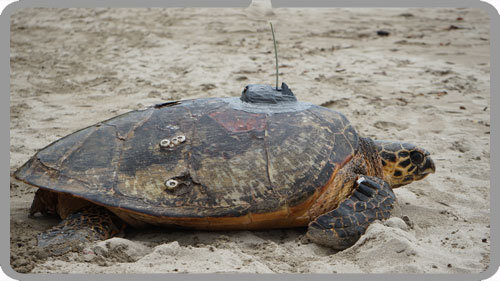In 2003, the Sea Turtle Conservancy launched a cooperative project to protect hawksbill sea turtle nesting population at Chiriquí Beach in the Bocas del Toro Province of Panama. While the primary focus is the initiation of a long-term hawksbill monitoring and protection program at Chiriquí Beach, the project also included the satellite tracking of post-nesting females hawksbill sea turtles.Chiriquí Beach is a remote beach on Panama’s Caribbean shore was once described by Dr. Archie Carr as the most important nesting beach in the Caribbean for the “critically endangered” hawksbill turtle (Eretmochelys imbricata). However, by the 1980s and 1990s, sporadic aerial and ground surveys suggested that nesting had declined as much as 98% from previous levels (Meylan and Donnelly, 1999). The decline was attributed to the extensive harvest of nesting hawksbills to support the international trade in tortoiseshell.
Although today’s nesting population is only a fraction of what it once was, there is increased optimism that depleted hawksbill populations can respond positively to long-term protection. This optimism is based on increased hawksbill nesting activity in recent years on well-protected beaches in Mexico, Barbados and Puerto Rico.
This project is a cooperative effort under the direction of STC, with support and/or funding provided by U.S. Fish and Wildlife Service, Wildlife Conservation Society, the Panamanian wildlife authority (ANAM), the Florida Fish & Wildlife Conservation Commission’s Fish & Wildlife Research Institution, Eckerd College, National Marine Fisheries Service, National Fish and Wildlife Foundation, the University of Panama, APRORENAMB (a local conservation group in Panama), the International Fund for Animal Welfare, and the Smithsonian Tropical Research Institute.
For more information on sea turtles, check out the Sea Turtles Information section of our website.
Learn more about the Chiriquí Beach Hawksbill and Leatherback Research and Conservation Program.
Learn more about the Ecology and Migrations of Marine Turtles in Bocas del Toro Province, Panama Project conducted by Drs. Anne and Peter Meylan
